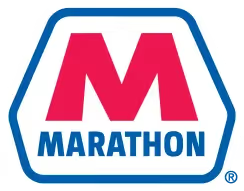To ensure their efficiency and safety, regular cleaning is essential. In this post, we’ll explore the top methods for net cleaning of industrial pipelines in the USA, highlighting their benefits and applications.

In the complex world of industrial operations, maintaining the integrity and functionality of pipelines is crucial. These pipelines, which transport vital resources like oil, gas, and water, are the lifelines of many industries. However, over time, they can become clogged with debris, scale, and other contaminants. To ensure their efficiency and safety, regular cleaning is essential. In this post, we’ll explore the top methods for net cleaning of industrial pipelines in the USA, highlighting their benefits and applications.
Pigging is a widely used method in the industry for cleaning pipelines. This process involves inserting a device known as a "pig" into the pipeline. As the pig travels through the pipeline, it scrapes away deposits and pushes them to a collection point. There are different types of pigs available, including foam pigs, brush pigs, and intelligent pigs, each designed for specific cleaning needs.
Advantages: Effective for cleaning large-diameter pipelines.- Can be used without interrupting the flow of the product.- Intelligent pigs can also inspect the pipeline for damage and wear.
Chemical cleaning involves using specialized chemical solutions to dissolve and remove deposits from the interior surfaces of pipelines. This method is particularly effective for removing scale, corrosion products, and organic deposits.
- Can be tailored to address specific types of deposits.
- Often used in conjunction with mechanical cleaning for thorough results.
High-pressure water jetting uses powerful jets of water to blast away deposits and contaminants from the inside of pipelines. This method is highly effective for removing stubborn deposits and is often used in conjunction with other cleaning methods.
- Can be used to clean pipelines of various sizes and materials.
- Effective for removing a wide range of deposits, including hard scale and sludge.
Ultrasonic cleaning uses high-frequency sound waves to agitate a cleaning solution, creating cavitation bubbles that effectively remove contaminants from the pipeline surfaces. This method is less common but highly effective for certain applications.
- Non-invasive and gentle on the pipeline material.
- Highly effective for removing fine particulate and biofilms.
- Can be used for both cleaning and maintenance to prevent buildup.
Air blasting involves using compressed air to blow out loose debris and contaminants from pipelines. This method is often used as a preliminary step before more intensive cleaning processes.
- Quick and cost-effective.
- Suitable for pipelines that transport dry or semi-dry materials.
- Can be easily implemented with minimal equipment.
Regular net cleaning of industrial pipelines is essential for maintaining their efficiency and safety. Each method has its own advantages and is suited to different types of deposits and pipeline configurations. By selecting the appropriate cleaning method, industries can ensure that their pipelines remain in optimal condition, minimizing downtime and maximizing productivity.Whether you’re dealing with large-scale oil pipelines or intricate chemical transport systems, understanding and implementing the right cleaning techniques is key to sustaining industrial operations. As technology continues to advance, we can expect even more innovative solutions to emerge, further enhancing the effectiveness and efficiency of pipeline cleaning.








